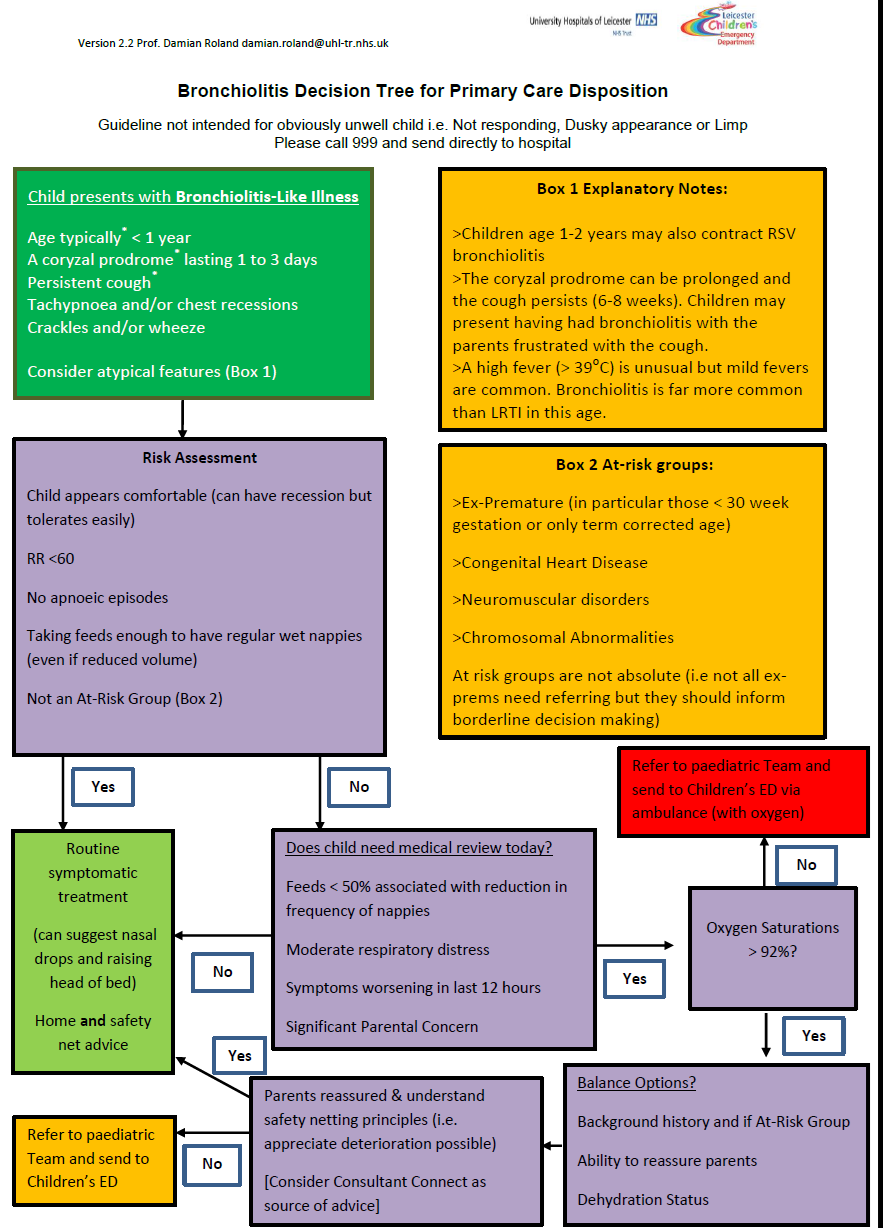Bronchiolitis
Bronchiolitis is an inflammation of the bronchioles.
Epidemics occur in winter, when bronchiolitis may account for half of paediatric hospital admissions (1). It is rarer in the tropics.
Bronchiolitis is the most common disease of the lower respiratory tract during the first year of life
- usually presents with cough with increased work of breathing, and it often affects a child's ability to feed
- in primary care, the condition may often be confused with a common cold, though the presence of lower respiratory tract signs (wheeze and/or crackles on auscultation) in an infant in mid-winter would be consistent with this clinical diagnosis
- symptoms are usually mild and may only last for a few days, but in some cases the disease can cause severe illness
- symptoms are usually mild and may only last for a few days, but in some cases the disease can cause severe illness
- approximately 1 in 3 infants will develop clinical bronchiolitis in the first year of life and 2-3% of all infants require hospitalization
- in 2011/12 in England, there were 30,451 secondary care admissions for the management of bronchiolitis
- it is uncommon for bronchiolitis to cause death. In 2009/10 in England, there were 72 recorded deaths of children within 90 days of hospital admission for bronchiolitis.
When diagnosing bronchiolitis, take into account that it occurs in children under 2 years of age and most commonly in the first year of life, peaking between 3 and 6 months.
Notes:
- diagnostic criteria for bronchiolitis vary between different regions of the world
- American Academy of Pediatrics, together with the European Respiratory Society defined bronchiolitis as the first episode of wheezing preceded by "a constellation of clinical symptoms and signs suggestive of a viral upper respiratory prodrome, followed by increased respiratory effort in children less than two years of age" (3)
- in the UK, a Delphi consensus exercise defined bronchiolitis as "a seasonal viral illness characterised by fever, nasal discharge, and dry, wheezy cough. On examination, there are fine inspiratory crackles, a high-pitched expiratory wheeze, or both". In the UK, the presence of a wheeze is not mandatory for diagnosis (4)
An assessment schemata for primary care has been suggested (5):

Reference:
- J Pediatr 2002; 140(1):27-32
- NICE (August 2021). Bronchiolitis in children
- American Academy of Pediatrics Subcommittee on Diagnosis and Management of Bronchiolitis. Diagnosis and management of bronchiolitis. Pediatrics 2006;118(4):1774-93
- Lakhanpaul M et all. An evidence based guideline for children presenting with acute breathing difficulty. www.nottingham.ac.uk/ paediatric-guideline/breathingguideline.pdf
- Profession Damian Rowland (2024). Bronchiolitis decision tree for primary care disposition.
Related pages
Create an account to add page annotations
Add information to this page that would be handy to have on hand during a consultation, such as a web address or phone number. This information will always be displayed when you visit this page